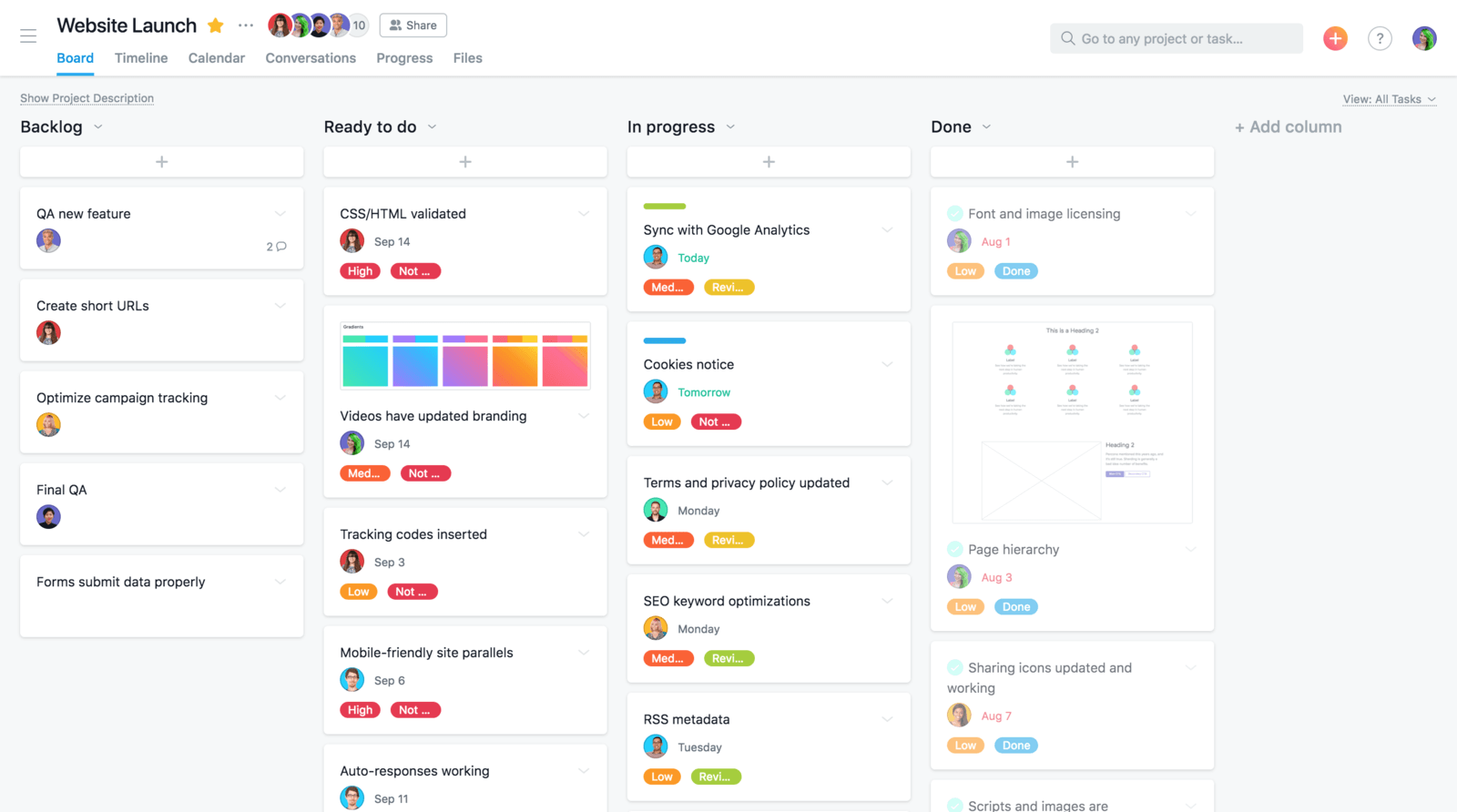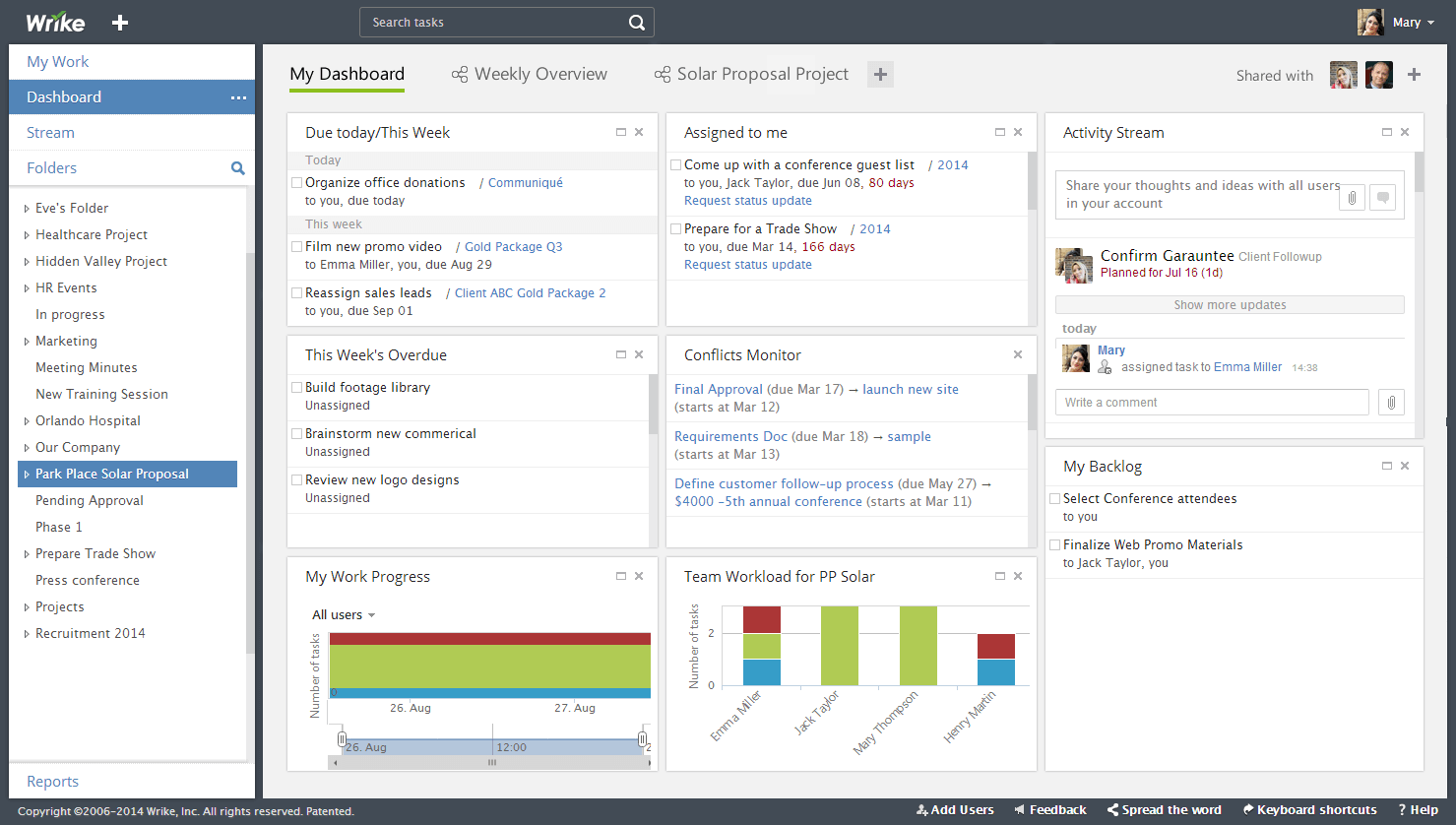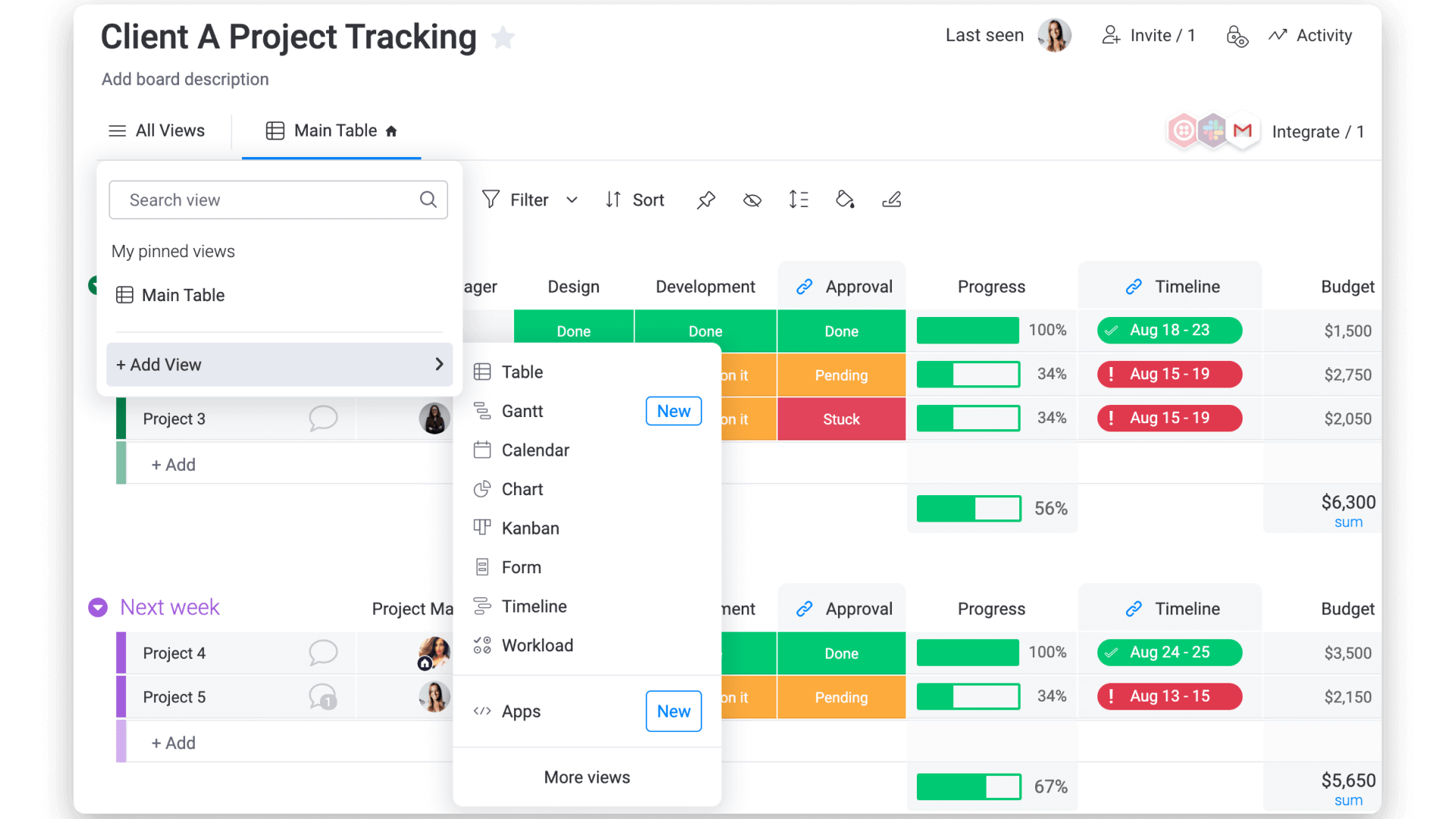Managing multiple projects at once can be challenging, whether running a large or small company. That's where project management software comes in. These tools help you plan, execute, and control projects effectively. Here are the top 4 project management software options for 2025.
Why These Project Management Platforms Are Reviewed
These project management platforms are highlighted because they represent the latest advancements in project management solutions for 2025. Each software provides unique features and benefits designed to meet the varied needs of businesses, from large enterprises to small startups.
Reviewing these tools helps identify which platform best meets specific project management requirements. With options for seamless integrations, intuitive interfaces, robust support, and budget-friendly plans, these platforms offer comprehensive solutions to enhance workflows and productivity. Whether you need quick setup, advanced customization, or effective collaboration, these top choices cater to diverse needs and preferences.
Asana
Overview of Asana
Asana is a leading SaaS-based project management tool that works on Windows, Linux, iOS, and Android. It supports multiple languages, including German, French, Portuguese, and Spanish. Asana helps teams organize their work, track progress, and collaborate seamlessly.

Key Features of Asana
Asana offers a range of robust features to enhance project management:
- RESTful API: Allows easy access and updates to data.
- Integrations: Over 100 integrations, including Outlook, Gmail, Google Drive, and OneLogin.
- Viewing Options: Multiple viewing options such as board view, list view, and calendar view.
- Dependency Management: Helps in managing task dependencies.
- Focus Mode: Enables distraction-free working.
- Templates: More than 50 templates to streamline various project types.
- Automatic Email Updates: Keeps team members informed with real-time updates.
Benefits of Using Asana
Using Asana brings several advantages:
- Easy Information Sharing: Facilitates seamless sharing of information.
- Free Plan: Available with limited functionality, making it accessible for smaller teams.
- Agile Tools: Provides tools for agile project management.
- User-Friendly Interface: Beginners can easily navigate and use Asana.
- Real-Time Updates: Ensures everyone stays updated on project progress.
Wrike
Overview of Wrike
Wrike is perfect for quick setups without needing extensive training. It is known for its user-friendly interface and is ideal for small projects that require a fast start.

Key Features of Wrike
Wrike offers essential features to streamline project management:
- Dashboards: Useful dashboards to track project progress.
- Gantt Charts: Helps in planning and visualizing project timelines.
- Reporting Suite: Extensive reporting suite to generate detailed project reports.
Benefits of Using Wrike
Wrike provides several benefits that make it a practical choice for project management:
- Quick Setup: Ideal for small projects, allowing teams to get started quickly.
- Built-In Time Tracking: Manages basic time tracking needs for project managers and task-specific users.
- Free Plan: Available for creating unlimited projects, though with limited features.
Trello
Overview of Trello
Trello is a flexible cloud-based project management tool known for its superior project collaboration. It's ideal for beginners, providing a free basic plan for quick startups.

Key Features of Trello
Trello offers a variety of features to enhance project management:
- Drag and Drop Functionality: Easy to use for moving components around.
- Voting Feature: Allows team members to vote on specific actions in real-time.
- Integrations: Integrates with third-party applications like Evernote, Zoho, and Zapier.
- Customizable Boards: Unlimited cards, personal boards, and lists for managing workloads.
- Power-Up Feature: Modify content on every board and add various integrations.
- Alerts and Updates: Provides alerts on deadlines and regular updates.
- Attachments and Checklists: Includes inline editing for better task management.
Benefits of Using Trello
Trello offers several benefits that make it an attractive option:
- User-Friendly Interface: Easy to use, even for beginners.
- Seamless Syncing: Syncs across desktops, laptops, tablets, etc.
- Full Support for iOS and Android: Accessible on various devices.
- High Customizability: Customizable to suit different project teams.
- Economical Pricing: Cheaper than many similar apps in the market.
Monday.com
Overview of Monday.com
Monday.com is a highly customizable work operating system that helps teams plan, track, and manage projects effectively. It offers a visual and intuitive interface, making it easy for teams to stay aligned and on track.

Key Features of Monday.com
Monday.com provides a suite of features designed to enhance project management:
- Customizable Workflows: Tailor workflows to fit specific project needs.
- Visual Dashboards: Track project progress with colorful, customizable dashboards.
- Automations: Automate repetitive tasks to save time and reduce errors.
- Integration Options: Connect with popular tools like Slack, Google Drive, and Microsoft Teams.
- Templates: Access a variety of templates to quickly set up new projects.
- Time Tracking: Monitor time spent on tasks and projects.
Benefits of Using Monday.com
Using Monday.com offers several advantages:
- Customizability: Highly flexible to fit various team needs and workflows.
- Visual Interface: Easy-to-use visual tools help teams understand project status at a glance.
- Automation: Streamlines processes and reduces manual work.
- Integration: Seamlessly connects with many other tools to enhance productivity.
ClickUp
Overview of ClickUp
ClickUp is an all-in-one project management tool designed to streamline work processes and boost productivity. It offers a range of features that cater to different project management styles, making it suitable for teams of all sizes.

Key Features of ClickUp
ClickUp offers a comprehensive set of features to support project management:
- Customizable Views: Switch between list, board, Gantt, and calendar views to suit different project needs.
- Task Management: Assign tasks, set due dates, and track progress with detailed task management features.
- Docs and Wikis: Create and share documents and knowledge bases within the platform.
- Time Tracking: Built-in time tracking tools to monitor work hours and productivity.
- Integrations: Connect with tools like Slack, Dropbox, and Zoom.
- Automations: Automate tasks and workflows to improve efficiency.
Benefits of Using ClickUp
ClickUp provides several benefits:
- All-in-One Solution: Combines project management, document creation, and time tracking in one platform.
- Customizable: Adaptable to different project needs and management styles.
- Comprehensive Features: Offers a wide range of tools and integrations to enhance productivity.
- User-Friendly Interface: Intuitive design that helps teams get started quickly.
TL;DR
In the ever-evolving landscape of project management, selecting the right tool can significantly impact the efficiency and success of managing projects. The project management platforms reviewed here—Asana, Workzone, Wrike, and Trello—each bring unique strengths to the table, addressing diverse needs and preferences.
Asana stands out for its comprehensive feature set and flexibility, making it suitable for teams of all sizes. Its extensive integrations, variety of viewing options, and user-friendly interface cater to both complex and straightforward project management needs. The ability to easily track and prioritize tasks ensures that teams can stay organized and focused.
Wrike is notable for its rapid setup and simplicity, making it a go-to choice for small projects or teams that need to get started quickly. Its built-in time tracking and comprehensive reporting tools provide essential functionality without overwhelming users with complexity. The generous free plan is an attractive option for those looking to manage multiple projects affordably.
Trello is renowned for its flexibility and ease of use, particularly for beginners. Its drag-and-drop functionality, voting feature, and customizable boards make it a versatile tool for project collaboration. The extensive integration options and economical pricing further position Trello as a valuable option for a wide range of project management scenarios.
Monday.com is praised for its visually appealing and highly customizable interface. It offers a wide range of features, including customizable workflows, dashboards, and automation options. Monday.com is particularly strong in visual project tracking and team collaboration, making it an excellent choice for teams looking for a highly adaptable and visually engaging platform.
ClickUp stands out for its comprehensive feature set and flexibility, combining task management, time tracking, and document collaboration in one platform. ClickUp’s versatility makes it suitable for various project types, from simple tasks to complex workflows. Its customizable features and integrations cater to diverse needs, making it a powerful tool for teams looking to centralize their project management efforts.
Conclusion
When choosing a project management platform, it is crucial to consider the specific needs of the team or organization, including the complexity of projects, required features, budget constraints, and user experience preferences. Each of these platforms offers distinct advantages that can cater to different aspects of project management, ensuring that there is a suitable option for a variety of use cases.
Ultimately, the right project management software can transform how projects are planned, executed, and monitored, leading to improved productivity, better collaboration, and successful project outcomes. Evaluating these top platforms provides a solid foundation for making an informed decision and selecting the tool that best aligns with individual or organizational goals.
Ready to get started?
Let’s migrate your data automatedly



